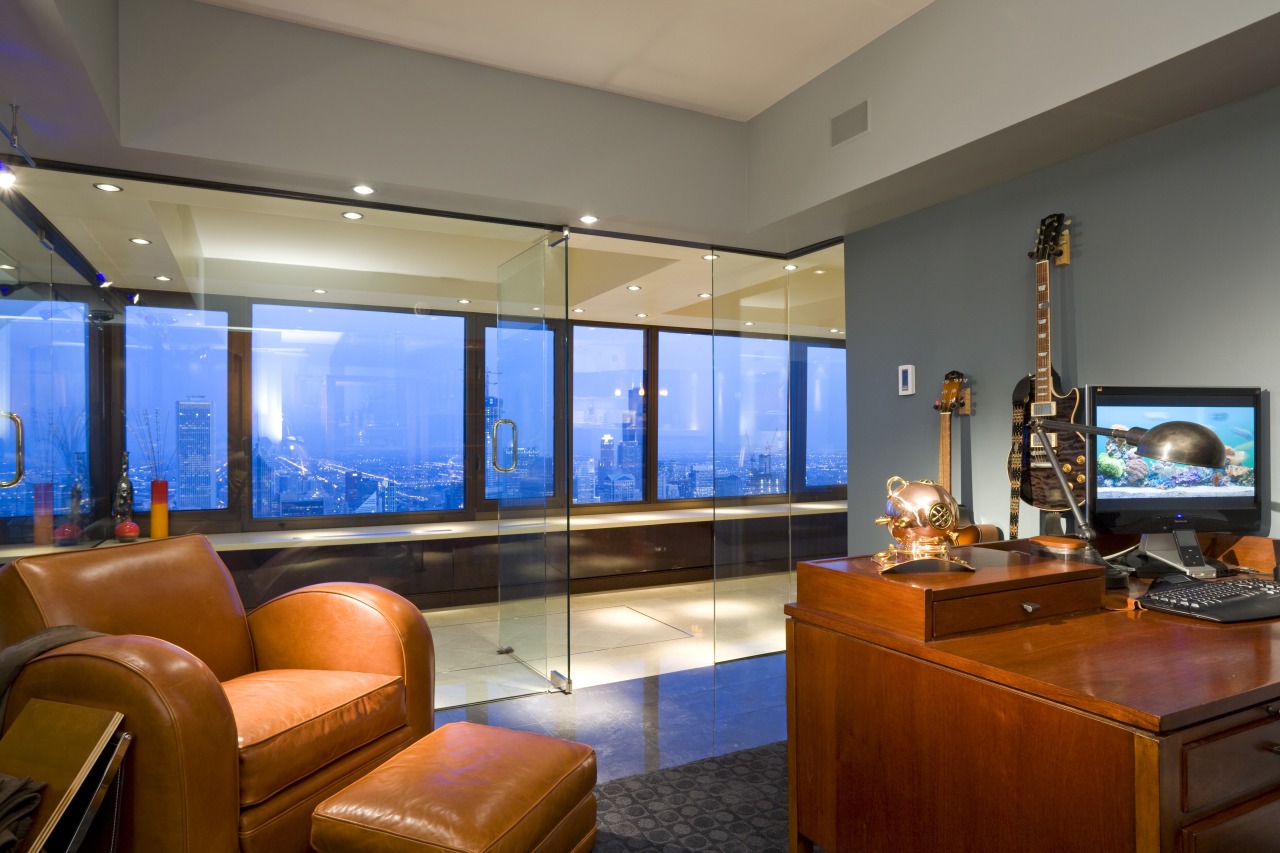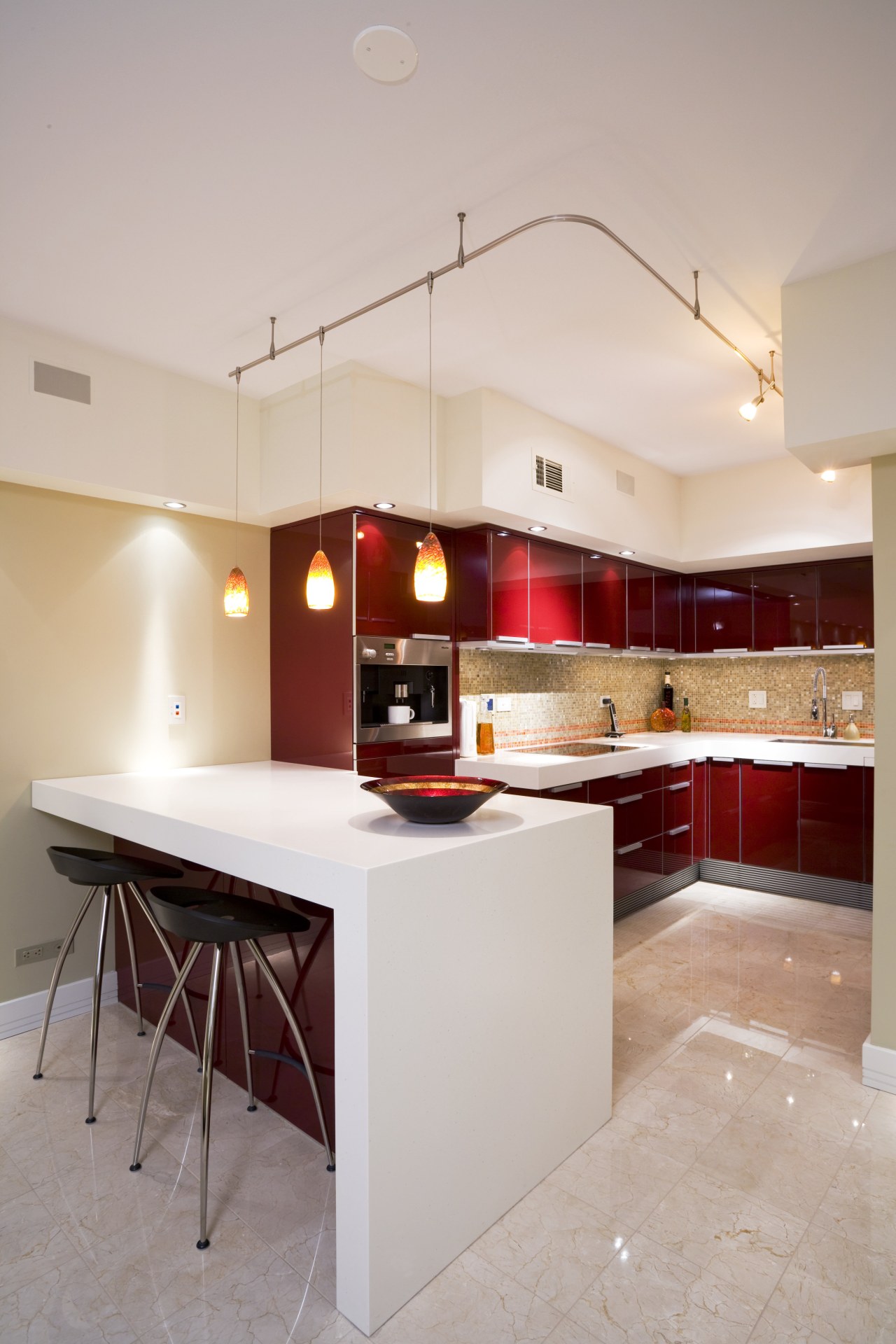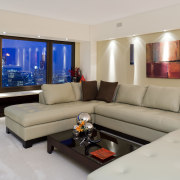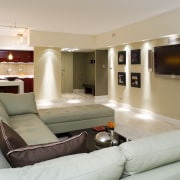The magnificent mile
Maximizing its Chicago views at every turn, this reinvented apartment in the iconic John Hancock Center has had several walls either knocked down completely or replaced with glass

Chicago's 100-story John Hancock Center was the tallest building in the world outside New York City when completed in 1969. Home to offices, restaurants, and around 700 condominiums, the skyscraper has several claims to fame, including the world's highest swimming pool.
In architectural terms, the John Hancock Center is particularly arresting. Built in a new structural expressionist style, the tower's external X-bracing allowed the building to climb to its then record-breaking height. The steel exoskeleton provides higher wind resistance and minimizes the need for structural support on the building's interior.
When the designer of this John Hancock Center apartment, Joe Fenoglio, first laid eyes on it, the interior was still sporting its original late-sixties decor. The unit was dark and sectioned into walled-in rooms that limited appreciation of the views.
"Essentially, we stripped the interior back and started afresh. Seen on a floor plan, the changes look modest, because most of the walls were rebuilt in the same place, but some with a difference," says Fenoglio. "We replaced drywall with glass partitions in two key areas, enabling occupants of the master bedroom and office to look through to the exterior windows and views beyond."
"The tower's external structural support has made this possible, freeing the interiors from the constraints of load-bearing walls. The glass dividing walls contribute to the modern ambiance of the apartment, while the crisscross framework gives the entire exterior of the Hancock Center a powerful structural aesthetic."

In the revamped kitchen and entrance, walls were removed completely, enabling this area to look across the central living space and over the city. Most of the other apartment walls were rebuilt so that high-tech wiring systems could be installed within them.
Design through structural expression was also employed in the soffit ceilings of the apartment.
"Soffit ceilings already existed in the apartment, but we dropped formwork from existing, higher ceiling levels in other areas to shape new soffits to match them," says Fenoglio. "In some areas, where in-ceiling space allowed, we raised the soffits into the available space the result is a series of symmetrical, airy ceilings throughout the unit."
Together with the walls and soffit ceilings, the floors also helped shape the look of the apartment. All rooms are floored with marble tile, with large sections of loom carpet inset into the central area.
"The idea was to have heavy traffic areas protected by durable natural stone, with the central carpeted areas providing a comfortable setting for sofas, desks or beds, depending on the room," says the designer. "This consistent positioning of the carpet and stone flooring, as with the soffit ceilings, contributes a symmetrical effect that helps draw the rooms together."

Fenoglio also introduced polished African Bubinga hardwood in many areas. A custom seat running the length of the apartment windows presents a prominent example. Topped in Corian and sided with Bubinga, this built-in element offers casual seating, provides storage, with wood panels opening on hinges, and conceals air conditioning.
As with the glass walls and the use of polished tile, the highly polished Bubinga contributes to the apartment's light, reflective nature. Fenoglio says lighting played a key role in the project.
"The inspiration for lowering and raising areas of ceiling formwork was partly to create symmetrical rhythms for the profusion of downlights," says Fenoglio. "I prefer the look of myriad distinct lights rather than a central feature light, such as a chandelier. The can lights are placed to throw strips of light down the walls, creating a decorative effect."
Credit list
Flooring
Paints and varnishes
Countertops
Kitchen sink
Oven, dishwasher, espresso machine
Microwave
Wall treatments
Heating
Audiovisual equipment
Kitchen design
Cabinetry
Backsplash
Faucets
Cooktop, ventilation
Refrigeration
Lighting
Furniture
Story by: Charles Moxham

Poggenpohl Kitchens
Cabinetry that will last for years
Home kitchen bathroom commercial design
Classic looks, contemporary efficiency
Diving into nature
Personality plus










